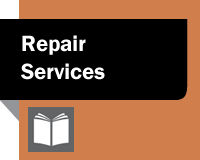2022 HME Business Handbook: Repair Service
Certification and Training For Your Service Technicians
- By Matthew Macpherson
- Jun 01, 2022
 There are some major
misconceptions within the
complex rehab and home medical
equipment industries when it
comes to service and repair. The
industry has long seen service
and repair as time-consuming,
expensive, labor-intensive, and
offering minimal financial return.
Rather, service and repair are
vital aspects of a provider, and
the industry must change its
perspective and focus on repair
services and technicians.
There are some major
misconceptions within the
complex rehab and home medical
equipment industries when it
comes to service and repair. The
industry has long seen service
and repair as time-consuming,
expensive, labor-intensive, and
offering minimal financial return.
Rather, service and repair are
vital aspects of a provider, and
the industry must change its
perspective and focus on repair
services and technicians.
There is an absence of
universal best-practice training
available for technicians. Such
a program would increase the
number of service technicians
entering the industry and provide
a formal training system that
has access to state support and a
national acceptance of standards.
Such a program also creates
a standard of practice for service
and repair, a code of ethics, and
competency testing for skill levels,
while providing pathways for
career growth. This curriculum
could guide individuals from
pre-employment to certfication
as a Level 1 technician and
further to certification as a Level
2 (Rehab) technician. The third
level (Level 3a) allows for the
Testing of Auditors to create a
sustainable infrastructure. Also, a
Level 3i designation would certify
individuals to teach technicians
via an educational organization
or manufacturer.
This should be made up of experienced
manufacturing partners with standards
and education relating to DME/CRT/CRT,
and have knowledge of the provider’s
perspective, all of which aid the direction
of this much-needed entity.
Partnering with RESNA would add
value to The DME/CRT/CRTRT Group.
This would include modified career
paths, whereby individuals can move
through an “apprenticeship” type
program that will help them transition
from Level 2 technicians to an ATP role.
This pathway will allow credit for the
certification they have already received
as a technician.
These advances in the service
technician industry are not only to
provide pathways from one position
to another, but to grow the depth and
appreciation within these positions. The
aim is to allow potential candidates the
ability to view becoming a technician as
a viable career, and not just a stepping
stone to becoming an ATP.
How do DME/CRT/CRT companies
make money on repairs?
This largely unanswered question has
impacted our industry greatly, slowing
the movement toward training and
investment in technicians. Concerns of
service and repair not being profitable
for a company have led to a lack of
appropriate pay increases to ensure
the retention of quality technicians.
This is both a huge issue and a great
opportunity for the industry to improve.
Poorly trained technicians or inefficient
systems in a service department can
create multiple costly problems:
- Multiple callouts for the same service
repairs — Inexperienced technicians/poor intake/inefficient systems.
- Delayed equipment repairs when
brought in — Inefficient systems.
- Wrong parts ordered — Inexperienced
technicians/inefficient systems
This can result in:
- Lower revenue on expenses to
complete call-outs.
- Lower revenue on repairs when
equipment is sitting in the shop.
- Lower revenue when parts have to be
returned and equipment is delayed.
- Customers complaining to staff about
delays — Intake time on phone.
- Customers complaining to referral
sources — loss of potential new sales.
- Customers choose a different
company for new equipment.
If a provider combines the education,
training, and advancement model
outlined in this article the following
outcomes can be anticipated:
- More revenue from faster repair times.
- Increased revenue from an efficient
service department and utilization of
staff and equipment.
- Increased sales through customer
retention — Individuals replacing
existing DME/CRT/CRT equipment
have a choice to stay with the current
DME/CRT/CRT provider or choose a
new one.
- Increase sales through customer
development — Repairing equipment
sold to a customer by another
company can provide an opportunity
to gain that customer for future new
DME/CRT/CRT purchases.
- More sales via service programs. When
referral sources are referring a new
patient to a DME/CRT/CRT provider,
there is usually a request from the
customer to direct them to a company
with good service, who will take care of
their needs even after purchase.
There are numerous opportunities
available in the Repair and Service
industry.
POINTS TO REMEMBER
- Too often, repair and service are
looked at as cost centers.
- Run correctly, they can help cut
costs and increase revenue.
- However, there needs to be a multi-tiered
training infrastructure to
ensure proper training.
- This creates not only standards of
practice but creates career paths.
This article originally appeared in the May/Jun 2022 issue of HME Business.
About the Author
Matthew Macpherson is the Executive Director of the DME/CRT/CRTRT Group and Co-Founder/CEO of ATLAS-FIOS (atlasfios.com). With more than 20 years of experience in the CRT/DME/CRT/CRT industry in positions ranging from service technician, ATP, and as a college instructor for DME/CRT/CRT/CRT repair service training, he has seen how successful service and repair systems can impact a company’s profitability.